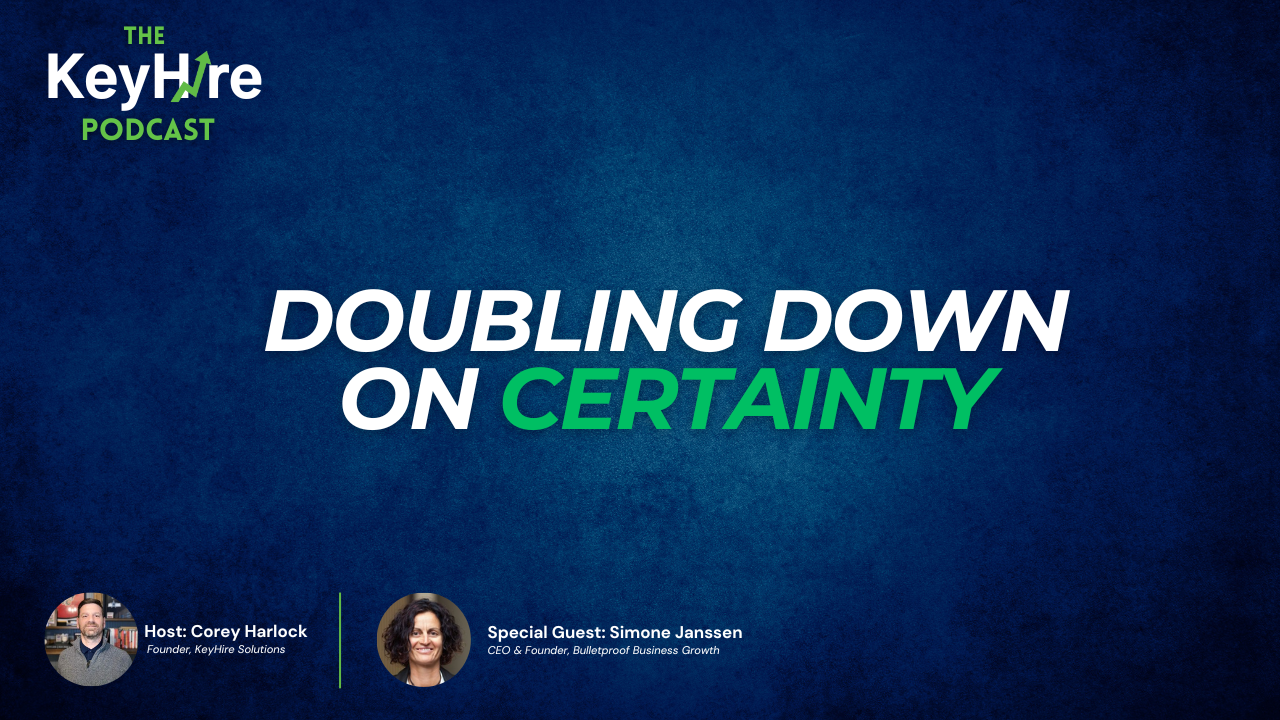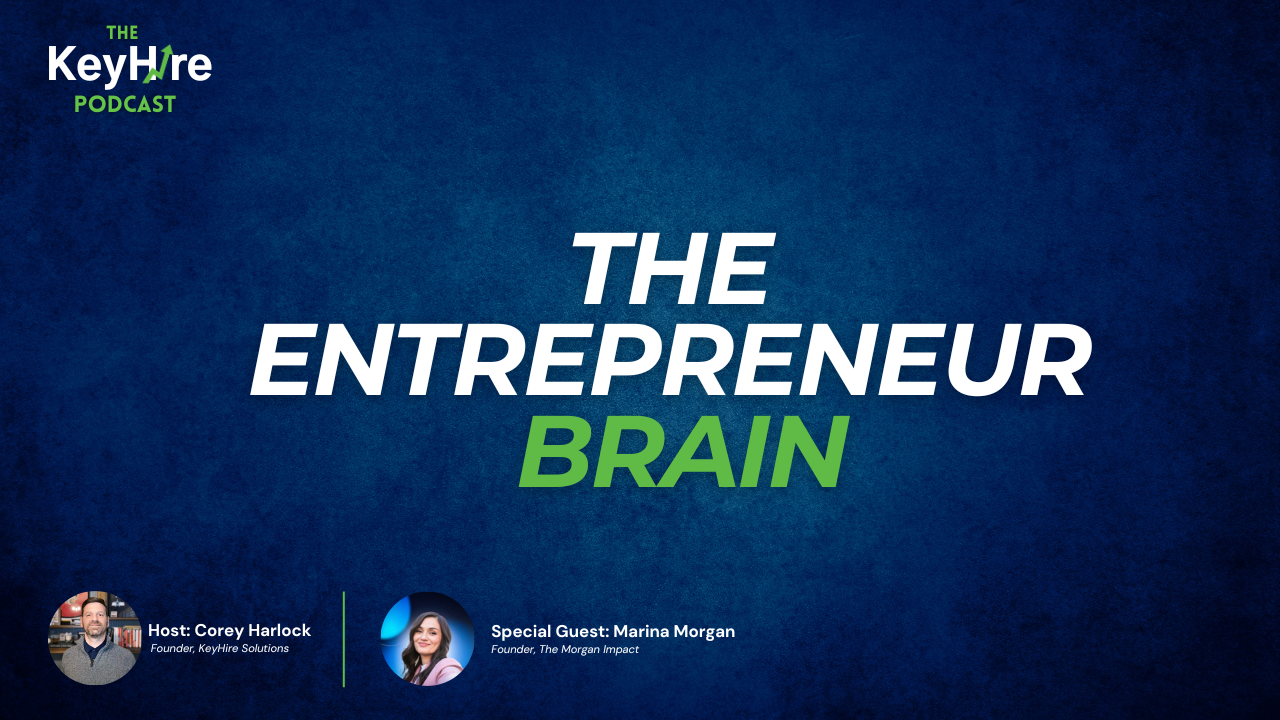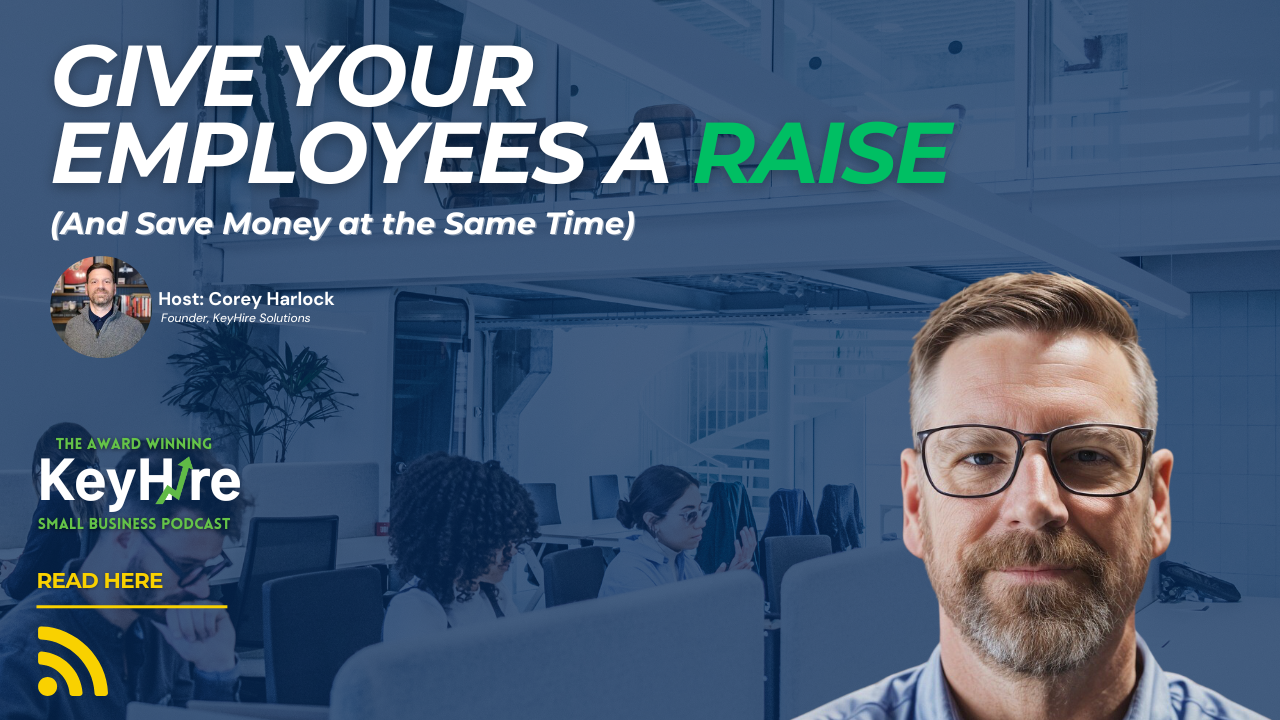Breaking the Chaos Cycle
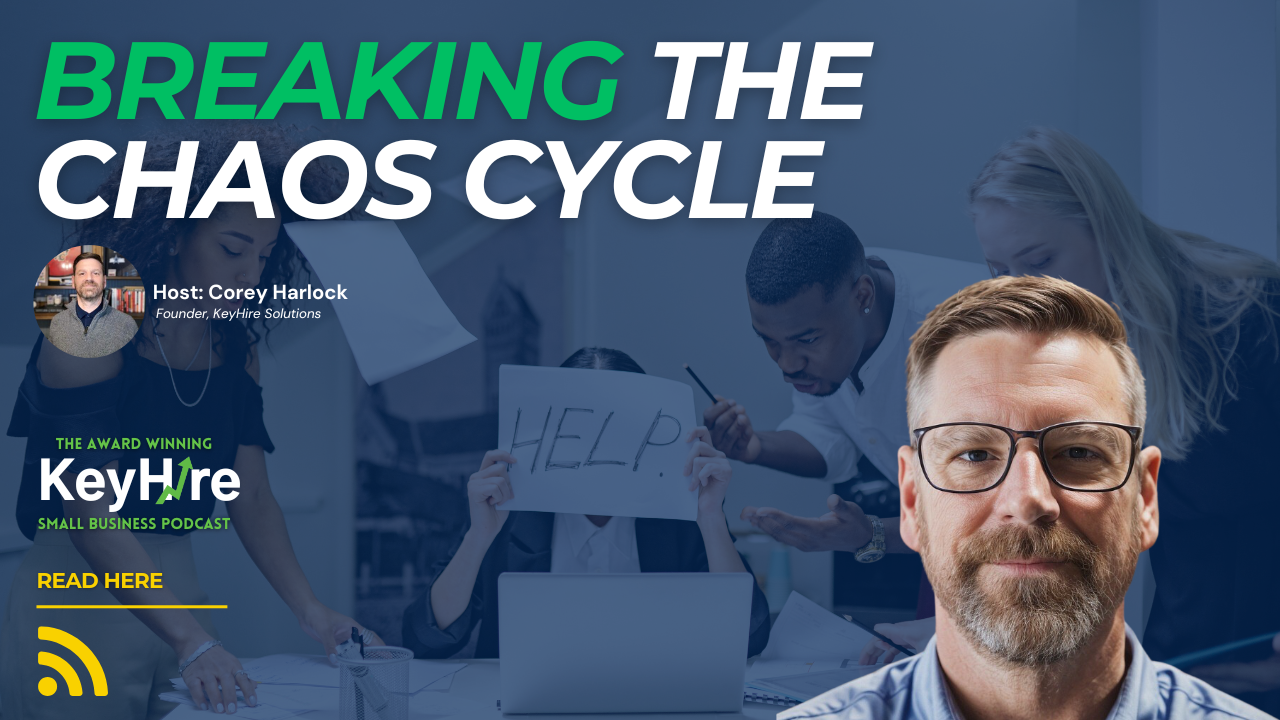
Running a small business often feels like a sprint and a marathon at the same time. In the early days, you’re just trying to prove the idea works. You’re scrappy, you’re resourceful, and you’re doing whatever it takes to survive. But what happens when success arrives—and with it, more complexity, more decisions, and more stress?
On this episode of The KeyHire Small Business Podcast, I sat down with Aaron Trahan, founder of Performance Mindset Coaching, to talk about what he calls “the chaos cycle” and how business leaders can finally break free from it. With 20 years of executive leadership experience, Aaron has seen companies scale the wrong way—and pay the price. Now, he coaches leaders on building the systems, focus, and mindset required to grow without burning out.
This conversation is full of wisdom every small business owner should hear. Let’s dive into the big takeaways.
The Chaos Cycle: Why Growth Sometimes Makes Things Harder
Most business owners share the same dream: “If I can just grow to this level of revenue, everything will get easier.” But Aaron warns that when growth is built on shaky foundations, the opposite happens—things actually get harder.
He explains the cycle like this:
- Priority Mismanagement – It starts when leaders chase too many things at once, jump at low-hanging fruit, or lack clarity about what really matters.
- Scattered Focus – Without clear priorities, organizational focus shatters into a hundred different directions.
- Inconsistent Execution – When focus is lost, execution suffers.
- New Priorities – Frustrated leaders try to fix the problem by launching even more initiatives, only making the chaos spin faster.
Sound familiar? Many small business owners nod their heads here—because they’ve lived it.
Why Slowing Down Can Help You Scale Faster
One of the big counterintuitive truths Aaron emphasizes is this: scaling isn’t about doing more. It’s about doing fewer things exceptionally well.
We often think growth requires adding products, expanding into new territories, or saying “yes” to every client request. But the companies that thrive? They narrow in on what they do best, systematize it, and deliver with consistency.
Aaron compares it to putting a Tesla in self-driving mode. A business dialed in to its few core priorities moves forward with momentum and predictability. A business chasing everything is stuck juggling an endless number of balls—until one drops and chaos returns.
How Chaos Shows Up Inside a Business
So how do you know if your business is caught in the chaos cycle? Aaron points to some clear warning signs:
- Constant firefighting – Your team spends more time reacting to problems than executing strategy.
- Misaligned priorities – Ask five leaders what the company’s top priorities are, and you’ll get five different answers.
- Frustrated employees – Everyone is working hard, but progress feels elusive.
Aaron uses a rowing analogy to drive this home. A high-performing rowing team moves fast because every rower is in sync. But if each leader in your company is rowing in their own boat, no amount of extra effort will match the speed of a team moving together.
Communication: The CEO’s Most Important KPI
If chaos thrives on confusion, the antidote is clear and relentless communication. Aaron argues that for CEOs, communication is more important than revenue, profitability, or even fundraising.
It’s not enough to declare priorities once at a quarterly meeting. Leaders must repeat them constantly, track progress visibly, and embed them into daily conversations.
Aaron cites a study from the High Performance Institute that shows setting goals isn’t enough. Teams that set goals but don’t track progress perform no better than teams that set no goals at all. The magic happens when goals are both clearand consistently measured.
His rule of thumb? If you’re not tired of repeating your priorities, your team hasn’t heard them enough.
The Rules of Growth: Filters to Avoid Shiny Objects
Even with clear goals, leaders face temptation—new clients, new deals, new markets. How do you know which opportunities to chase and which to pass on?
Aaron suggests running them through three filters:
- Is it sustainable? Will this opportunity keep fueling growth, or is it just a short-lived sugar high?
- Does it create operating leverage? If every new dollar of revenue requires a new dollar of expense, you’re not scaling—you’re treading water.
- Can we manage it? Growing faster than your systems can handle eventually leads to breakdowns that force you to backtrack.
As Warren Buffett says, great companies are defined not by what they say “yes” to—but by all the things they confidently say “no” to.
What Are You Really Optimizing For?
Aaron encourages every business to ask a deceptively simple question: “What are we optimizing for?”
Growth for growth’s sake often hides deeper needs—like profitability, cash flow, or stability. By asking this question, leaders can avoid chasing shiny opportunities that drain resources without moving the company closer to its real objectives.
He puts it plainly: “Revenue is vanity, profits are sanity, and cash is king.”
Practical Advice to Break the Cycle
If you’re reading this and realizing your business is stuck in the chaos cycle, Aaron offers a roadmap out:
- Work backwards from your vision. Decide where you want to be in 12 months, then break it down into six-month and three-month priorities. Think of them as “base camps” on your way to the summit.
- Focus on fewer priorities. Aim for two or three at a time and make sure everyone knows what they are.
- Communicate relentlessly. If you’re not repeating your goals to the point of exhaustion, you’re not doing it enough.
- Measure progress weekly. Simple “on track, at risk, off track” reporting keeps everyone aligned.
- Protect profitability and cash flow. Don’t just chase revenue—chase healthy, sustainable growth.
Final Thoughts
Running a small business will always be hard work, but it doesn’t have to be chaos. By slowing down, aligning your team, and focusing on fewer, smarter priorities, you can finally escape the cycle of scattered effort and build a business that scales sustainably.
As Aaron reminded us, focus is a superpower. The companies that master it don’t just survive—they thrive.
If this conversation resonated with you, check out Aaron’s work at Performance Mindset Coaching or connect with him on LinkedIn. And if you want more insights like this, make sure you’re subscribed to The KeyHire Small Business Podcast—because our mission is simple: to help you stop grinding and start growing.
Listen & subscribe:
Podcast:
https://www.keyhire.solutions/the-keyhire-podcast--new
YouTube:
https://www.youtube.com/@keyhiresolutions
Connect with us:
https://www.keyhire.solutions



